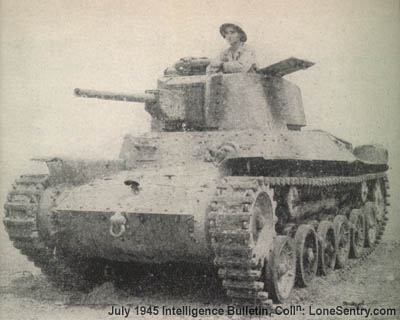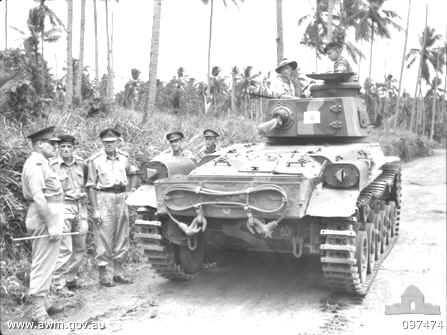It never saw combat. The few dozen they built were all retained for the defense of the home islands.
You might want to do some research before spouting nonsense.
All six of them.
Japanese Tanks that actually may have seen combat:
Type 1 Chi-He

Specifications
Weight 17 tons
Length 5.5 meters
Width 2.2 meters
Height 2.38 meters
Crew 5
--------------------------------------------------------------------------------
Armor 8-50 mm
Primary
armament 47 mm Type 1 gun
Secondary
armament 2 x 7.7 mm Type 97 gun
(hull, coaxial)
Engine Mitsubishi Type 100 air cooled
V-12 diesel
240 hp (179 kW)
Suspension Bell crank
Operational
range 210 kilometers
Speed 44 km/h
Possibly saw service in the Philippines.
Type 97 Chi-Ha medium tank:



Specifications
Weight 15.8 tonnes,17.416 ton [short, US]
Length 5.50 meters
Width 2.34 meters
Height 2.38 meters
Crew 4
--------------------------------------------------------------------------------
Armor 33 mm - 8 mm
Primary
armament 57 mm Type 97 gun
Secondary
armament two 7.7 mm Type 97 machine gun
Engine V-12 21.7 l diesel Mitsubishi Type 97
170 hp (130 kW)
Power/weight 11 hp/tonne
Suspension Bell crank
Operational
range 210 kilometers
Speed 38 km/h 23.6 mph
Early war. Malay, Singapore, Philippines, as well as late war Island defence. Specifically Saipan where Japanese mounted probably it's largest tank attack of the war.
Type 95 Ha-Go light tank:



Specifications
Weight 7,400 kilograms [1]
Length 4.38 m [1]
Width 2.06 meters [1]
Height 2.18 meters [1]
Crew 3 [1]
--------------------------------------------------------------------------------
Primary
armament Type 94 37 mm gun
Secondary
armament Type 91 6.5 mm machine gun
or 2 x Type 97 7.7 mm machine gun
Engine Mitsubishi NVD 6120 air-cooled diesel
120 hp (89 kW) [1]
Suspension Bell crank
Operational
range 250 kilometers
Speed 45 km/h (road)
Early war through Island defense.
Cannor fodder.

wrongway